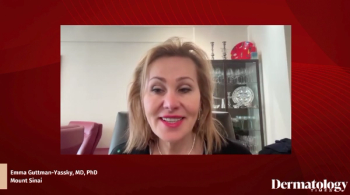
A late-breaking EADV presentation revealed that ritlecitinib significantly improved outcomes in patients with multiple forms of scarring alopecia.

A late-breaking EADV presentation revealed that ritlecitinib significantly improved outcomes in patients with multiple forms of scarring alopecia.

The biologic’s less frequent injections could ease logistical and emotional strain for patients with atopic dermatitis and their families.
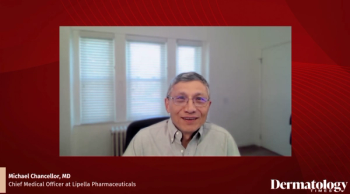
Lipella Pharmaceuticals' LP-10 shows promise as a targeted treatment for OLP, offering safety and efficacy in recent trials, according to Michael Chancellor, MD.

Panelists discuss how hydroquinone’s safety concerns including ochronosis and irritation necessitate the use of alternative tyrosinase inhibitors such as thiamidol, cysteamine, kojic acid, and lotus sprout extract, which offer better tolerability and can provide an overall skin evening and glow that patients desire.

Panelists discuss how treatment selection for melasma should begin with topical regimens including lightening agents, retinoids, and sun protection before considering procedures, emphasizing patient adherence and the appropriate use of hydroquinone and triple combination therapies as gold standard treatments despite some tolerability concerns.
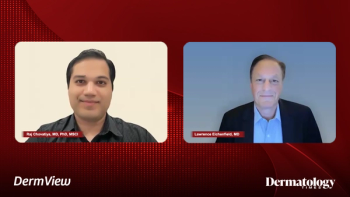
Panelists discuss how OX40 pathway–targeted therapies may benefit specific patient subsets with particular immunologic profiles and could potentially modify the disease course when used early, although patient selection criteria remain unclear.

Panelists discuss how the OX40-OX40L costimulatory pathway represents a promising upstream target for atopic dermatitis treatment by modulating T-cell survival, expansion, and memory formation rather than targeting downstream cytokines. Panelists discuss how targeting the OX40-OX40L pathway could potentially provide broader therapeutic effects across multiple T-cell subsets and offer more durable responses than current cytokine-specific or JAK inhibitor approaches.

Brian Kim, MD, FAAD, explores the transformative role of neuroimmunology in dermatology, urging a shift towards systems-level therapeutic strategies.

Brian Kim, MD, FAAD, explores the Cell Symposia: Neuro-immune Axis, highlighting neuroimmunology's impact on dermatology and systemic medicine.

Panelists discuss recent research highlighting the benefits of polymeric surfactant–based cleansers, which preserve key skin barrier functions and the microbiome while providing a gentle yet effective cleansing experience that supports patient adherence—especially important for sensitive skin conditions like eczema and rosacea—and emphasize the complementary role of moisturizers rich in lipids and humectants to restore and maintain barrier health across diverse patient needs.

Panelists discuss a recent study demonstrating that cleansers formulated with hydrophobically modified polymers significantly improve skin condition and patient comfort in individuals with clinically diagnosed sensitive skin, highlighting their ability to cleanse gently while supporting barrier repair without disrupting the skin’s microbiome.

Trial data show up to 30% of patients achieved complete response and 70% demonstrated some benefit from treatment.
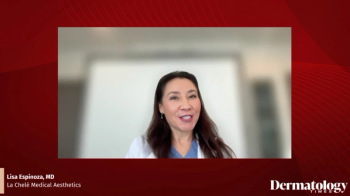
Lisa Espinoza, MD, highlights the importance of patient education and tailored HA filler treatments for achieving natural cosmetic results.
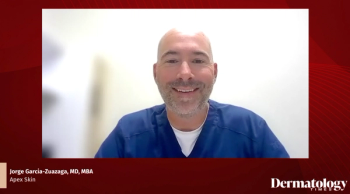
Jorge Garcia-Zuazaga, MD, MBA, FAAD, FACMS, shares how Apex Skin is improving trial adherence through bilingual staff, modernizing operations with digital tools, and strengthening community partnerships.

ORKA-001 builds on the proven success of existing IL-23 inhibitors used in psoriasis treatment.

Lisa Espinoza, MD, discusses key insights from Allergan's Hyaluronic Acid Injectable Fillers Report, highlighting patient satisfaction and evolving aesthetic trends.

Explore insights from Renata Block DMSc, MMS, PA-C, and James Del Rosso, DO, on interpreting clinical trial data in dermatology for enhanced patient care and outcomes.

Panelists discuss how melasma diagnosis requires identifying specific location patterns, absence of scale, avoidance of eyelid areas, and using Wood lamp examination to differentiate between superficial and deep melasma while distinguishing it from other pigmentary conditions such as postinflammatory hyperpigmentation and solar lentigines.

Panelists discuss how melasma is a chronic disease caused by the interplay of hormones, sunlight, heat, and genetic predisposition, emphasizing that prevention through comprehensive sun protection including daily sunscreen use (particularly tinted mineral formulations), avoiding peak sun hours, wearing protective clothing, and considering oral supplements is essential for managing this condition that requires lifelong treatment rather than a cure.

Many HS patients still require more aggressive or advanced treatments due to incomplete response to current options.

Mary W. Chang, MD, discusses the expanded FDA approval of ruxolitinib cream for children with atopic dermatitis and its role in addressing treatment gaps, safety, and real-world use.

Panelists discuss how the OX40-OX40L costimulatory pathway represents a promising upstream target for atopic dermatitis treatment by modulating T-cell survival, expansion, and memory formation rather than targeting downstream cytokines.

A panelist highlights emerging therapies such as phosphodiesterase-4 (PDE4) and topical Janus kinase (JAK) inhibitors that target shared inflammatory pathways across skin diseases, emphasizing their potential to simplify and improve seborrheic dermatitis management with safer, more convenient options and a promising pipeline of treatments on the horizon.

Panelists discuss how atopic dermatitis involves complex T-cell–mediated immune dysfunction beyond just Th2 pathways, with antigen-presenting cells driving naive T-cell activation and differentiation into multiple T-cell subsets that produce various inflammatory cytokines.

Panelists discuss the benefits of hydrophobically modified polymer surfactants, highlighting their gentle cleansing action that effectively removes impurities while preserving the skin barrier, making them ideal for sensitive and compromised skin.

Panelists discuss the importance of choosing gentle, pH-balanced surfactants in cleansers to protect the skin barrier while balancing patient preferences for foaming and sensory experiences.

Derm Dispatch host Renata Block, DMSc, MMS, PA-C, and Buchi Neita, MCMSc, PA-C, discuss how to revolutionize dermatology with lifestyle medicine, enhancing skin health and overall well-being.

This episode explores the controversy and lack of clear diagnostic criteria for TSW.

Jorge Garcia-Zuazaga, MD, MBA, FAAD, FACMS, shares how Apex Skin’s multi-site model advances clinical trial access, diversity, and execution.

Elena Hawryluk, MD, PhD, shares groundbreaking insights on pediatric dermatology and melanoma management at Maui Derm NP+PA, emphasizing innovative treatments.